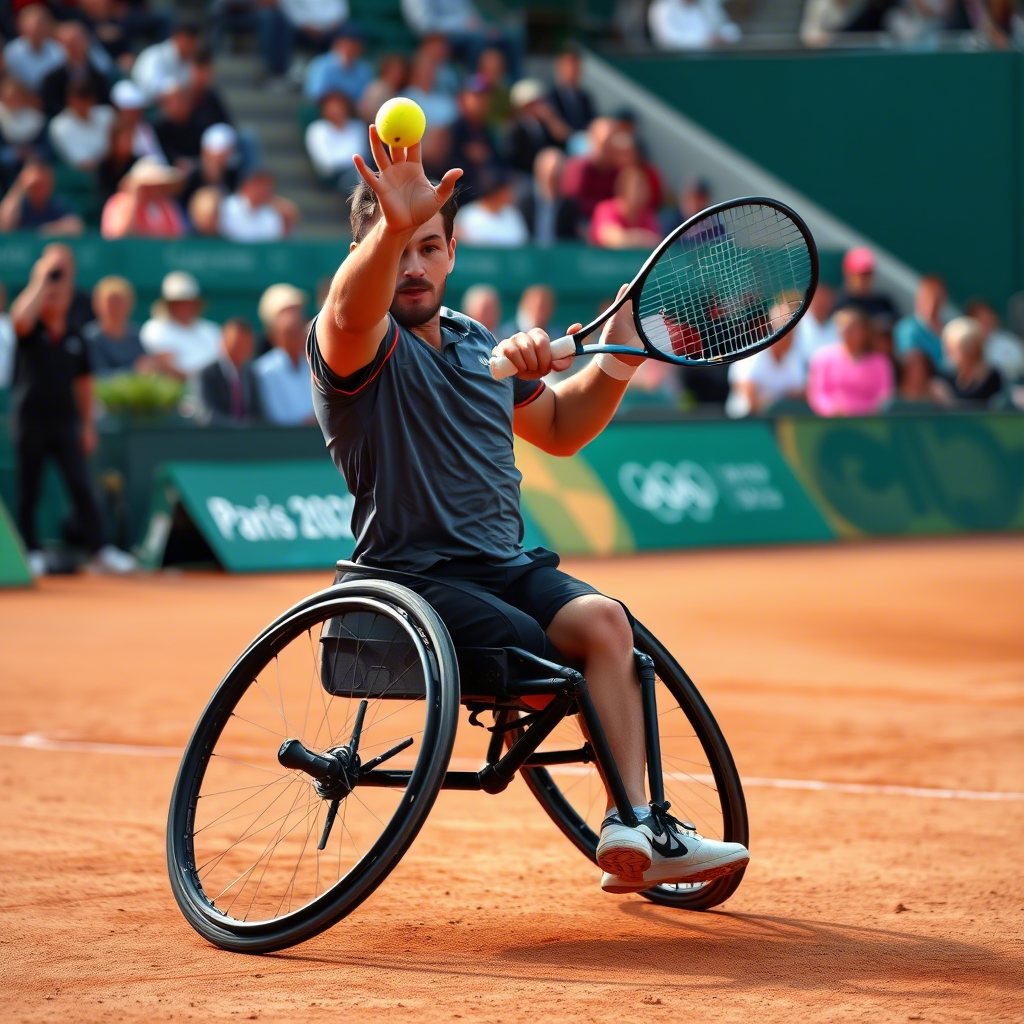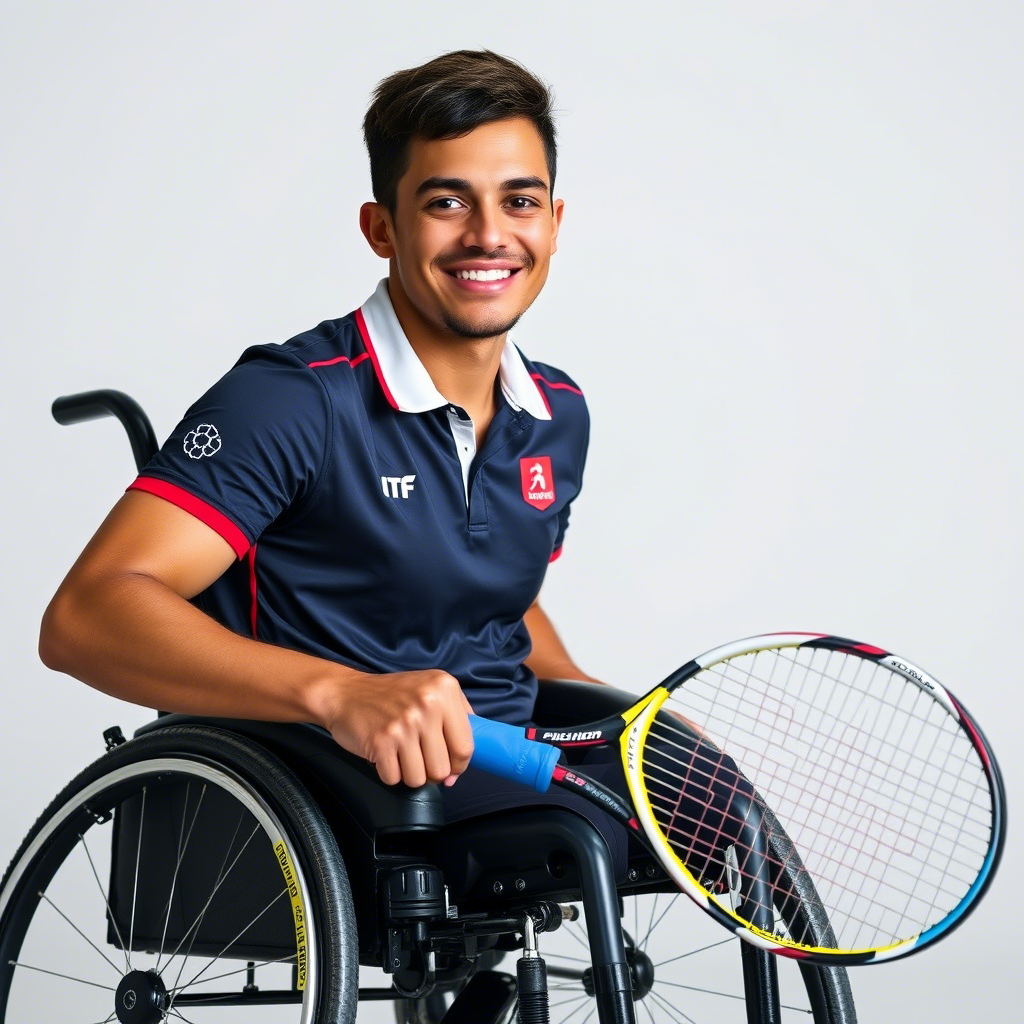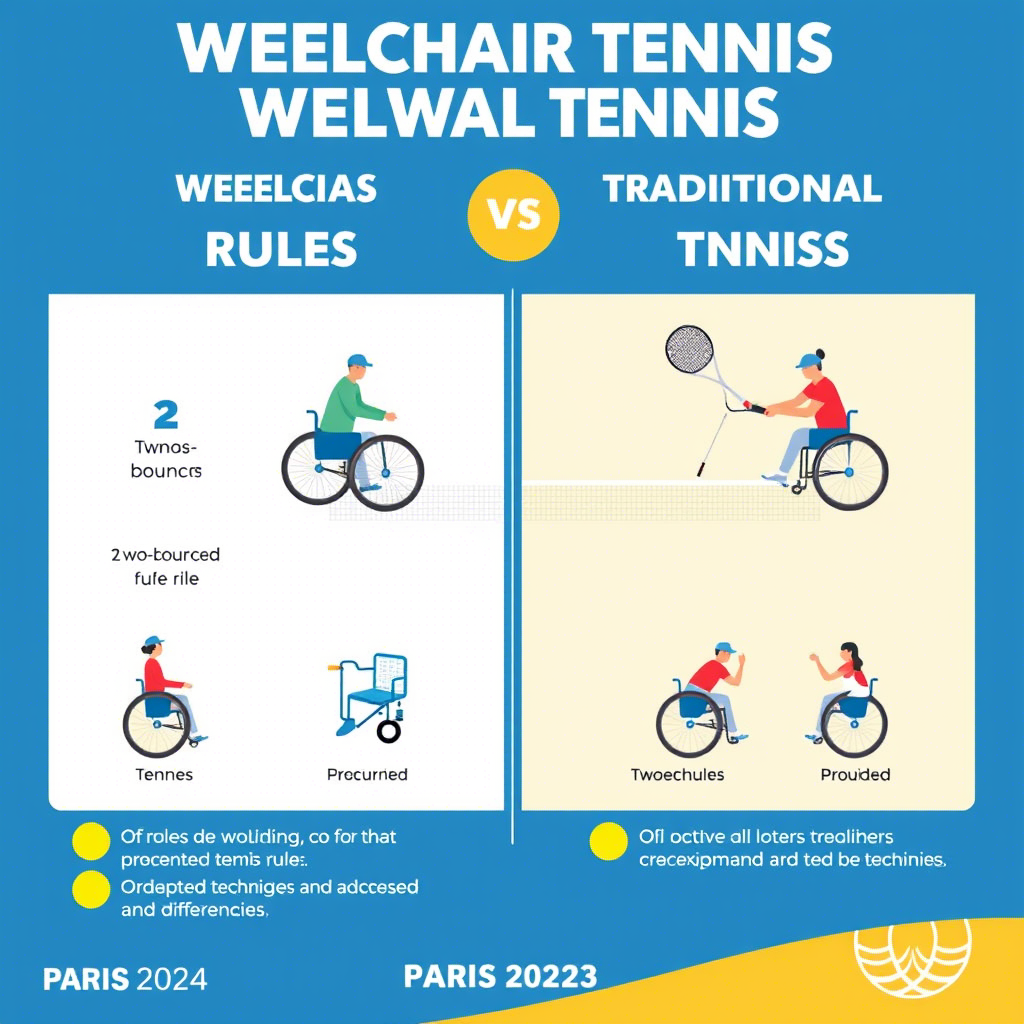When the world turns its eyes to Paris in 2024 for the Summer Paralympic Games, one sport that will undoubtedly capture hearts is wheelchair tennis. This dynamic and fast-paced discipline has grown exponentially since its inception, becoming a cornerstone of the Paralympic movement. It’s not just about hitting a ball over a net—it’s about showcasing resilience, precision, and an unyielding spirit. Let’s dive into what makes wheelchair tennis so special, how it fits into the broader context of the Paralympics, and what we can expect from this thrilling event in 2024.

The Rise of Wheelchair Tennis: From Humble Beginnings to Global Phenomenon
Wheelchair tennis was invented in 1976 by Brad Parks, a young American athlete who became paralyzed after a skiing accident. Looking for ways to stay active, Parks adapted traditional tennis rules to accommodate players using wheelchairs. His innovation quickly gained traction, and within two decades, wheelchair tennis had earned full medal status at the Paralympic Games, debuting in Barcelona in 1992.
Today, the International Tennis Federation (ITF) oversees wheelchair tennis as part of its global tournaments, including the Grand Slams. Players compete in singles and doubles events across three categories based on their level of mobility impairment: Open, Quad, and Standing. For the Paralympics, however, only the Open category is contested, ensuring top-tier competition among elite athletes.
What sets wheelchair tennis apart is its inclusivity. Unlike many other adaptive sports, it follows nearly identical rules to able-bodied tennis—with one key difference: the ball is allowed to bounce twice before being returned. This subtle adjustment opens up opportunities for athletes with varying degrees of physical ability to excel while maintaining the essence of competitive play.
The Evolution of Rules and Equipment
Over the years, the rules and equipment used in wheelchair tennis have evolved significantly. Initially, the sport faced skepticism from traditionalists who doubted whether wheelchair users could replicate the speed and intensity of able-bodied tennis. However, advancements in wheelchair design and tire technology have transformed the game. Modern sports wheelchairs are lightweight, durable, and specifically engineered for agility, allowing players to execute sharp turns, rapid accelerations, and powerful strokes.
For example, carbon fiber frames and specialized wheels reduce friction and enhance maneuverability, enabling athletes to reach speeds of up to 20 miles per hour during matches. These innovations have elevated the level of competition, making wheelchair tennis a spectacle of athleticism and skill.
Moreover, the rule allowing two bounces provides strategic depth. Players must decide whether to hit the ball on the first bounce or wait for the second, depending on their positioning and opponent’s tactics. This unique aspect adds layers of complexity, requiring quick decision-making and adaptability.
Global Growth and Recognition
From its modest beginnings in California, wheelchair tennis has spread to every corner of the globe. Today, there are over 100 countries participating in ITF-sanctioned tournaments, with thousands of players competing at various levels. The sport’s popularity surged further when it was included in the Paralympics, giving it a prestigious platform and inspiring countless individuals to take up the racquet.
Countries like Japan, the Netherlands, and the United States have emerged as powerhouses, producing some of the most decorated athletes in the sport. Meanwhile, emerging nations such as Thailand, South Africa, and Argentina are investing in grassroots programs to nurture talent and increase representation on the international stage.
This global expansion reflects the universal appeal of wheelchair tennis. Regardless of background or circumstance, anyone with access to a court and a racquet can participate, fostering a sense of belonging and community among players.
Why Wheelchair Tennis Matters: Breaking Barriers, Building Bridges
At its core, wheelchair tennis transcends sport—it’s a powerful platform for promoting inclusion and challenging societal perceptions of disability. Athletes like Dylan Alcott (Australia), Diede de Groot (Netherlands), and Shingo Kunieda (Japan) have become household names, inspiring millions worldwide through their achievements both on and off the court.
Take Dylan Alcott, for instance. Before retiring in 2022, he won multiple Paralympic gold medals and dominated the quad division of wheelchair tennis. Beyond his athletic prowess, Alcott used his visibility to advocate for accessibility and mental health awareness, proving that sports stars can drive meaningful social change.
The impact extends beyond individual stories. Wheelchair tennis also fosters community building. Local clubs and programs provide safe spaces for people with disabilities to connect, learn, and grow together. These initiatives often serve as stepping stones for aspiring athletes, nurturing talent from grassroots levels all the way to international competitions like the Paralympics.
Changing Perceptions Through Sport
One of the most significant contributions of wheelchair tennis is its role in reshaping public attitudes toward disability. Historically, people with disabilities were often marginalized or pitied, viewed through a lens of limitation rather than potential. Wheelchair tennis flips this narrative, showcasing individuals who defy expectations and achieve greatness despite—or perhaps because of—their challenges.
Consider the story of Esther Vergeer, a Dutch player widely regarded as one of the greatest wheelchair tennis athletes of all time. Over her career, she amassed an astonishing 470-match winning streak and claimed 21 Paralympic and Grand Slam titles. Her dominance not only shattered records but also challenged stereotypes, demonstrating that excellence knows no boundaries.
Similarly, the success of quad players—those with impairments affecting both their upper and lower limbs—has highlighted the importance of adaptability and determination. Competing with limited hand function requires immense creativity and resourcefulness, qualities that resonate deeply with audiences.
Empowerment Through Participation
Beyond elite competition, wheelchair tennis empowers participants at all levels. For many, joining a local club offers a lifeline—a chance to rebuild confidence, forge friendships, and reclaim independence. Studies have shown that involvement in adaptive sports improves mental health, reduces isolation, and enhances overall quality of life.
Programs like the ITF’s “Tennis for All” initiative aim to make the sport accessible to underserved communities. By providing free coaching sessions, equipment loans, and tournament opportunities, these efforts ensure that financial barriers don’t prevent talented individuals from pursuing their dreams.
What to Expect at the Paris 2024 Paralympics
Paris 2024 promises to be a landmark edition for wheelchair tennis, blending tradition with innovation. Here’s what fans can look forward to:

1. World-Class Competition
The tournament will feature the best wheelchair tennis players from around the globe, battling it out on clay courts—a surface known for testing strategy and endurance. Favorites like Diede de Groot, currently dominating women’s singles, and Alfie Hewett, a reigning champion in men’s singles, are expected to shine. However, the beauty of sports lies in its unpredictability, and underdog victories always keep audiences on edge.
Clay courts present unique challenges compared to hard or grass surfaces. They slow down the pace of play, favoring patience and precision over raw power. This shift may benefit players with exceptional tactical skills, adding intrigue to the matchups.
2. Enhanced Accessibility
Paris organizers have made accessibility a priority, aiming to create an inclusive experience for spectators and participants alike. From wheelchair-friendly seating arrangements to real-time captioning services, these efforts reflect the Paralympic values of equality and empowerment.
The Roland Garros stadium, home to the French Open, will host the wheelchair tennis events. Renowned for its iconic red clay courts, the venue has undergone extensive renovations to ensure compliance with accessibility standards. Ramps, elevators, and tactile signage will guide visitors seamlessly through the grounds, while designated viewing areas offer optimal vantage points for wheelchair users.
3. Innovative Technology
Technology plays a crucial role in modernizing the viewing experience. Fans might see advancements such as AI-powered analytics to track player performance or virtual reality options allowing remote viewers to immerse themselves in the action. Such innovations not only enhance engagement but also highlight the intersection of sports and technology.
For example, wearable sensors could monitor athletes’ movements and biometrics, offering real-time insights into their physical condition. Broadcasters might leverage augmented reality graphics to illustrate shot trajectories and court coverage, helping viewers better understand the nuances of the game.
4. Growing Participation
One of the most exciting trends is the increasing participation of nations in wheelchair tennis. Countries like Brazil, China, and South Africa are investing heavily in developing their para-athletes, signaling a shift toward greater diversity in representation. This growth underscores the universal appeal of the sport and its potential to unite people across cultures.
In recent years, several African nations have established national teams, thanks to partnerships with international organizations and sponsors. These collaborations provide training camps, coaching clinics, and exposure trips, equipping athletes with the tools they need to succeed on the global stage.
Challenges Facing Wheelchair Tennis
Despite its success, wheelchair tennis faces challenges that need addressing to ensure sustainable growth. Funding remains a significant hurdle, particularly for athletes from developing countries where resources are limited. While sponsorship deals and prize money have improved, they still lag behind those offered in mainstream tennis.

Additionally, misconceptions about disability persist, sometimes leading to stigma or lack of support for para-athletes. Education campaigns and media coverage can help combat these biases, fostering a more inclusive environment for everyone involved.
Addressing Financial Barriers
Many wheelchair tennis players rely on external funding to cover travel expenses, coaching fees, and equipment costs. Without adequate financial backing, even the most promising talents risk falling through the cracks. To bridge this gap, governing bodies like the ITF and the International Paralympic Committee (IPC) must work closely with governments, corporations, and philanthropists to secure long-term investments.
Crowdfunding platforms and social media have also proven effective in rallying support for individual athletes. Campaigns highlighting personal journeys and achievements often resonate with donors, generating much-needed funds and raising awareness simultaneously.
Promoting Awareness and Education
Public perception remains a critical factor influencing the development of wheelchair tennis. Misunderstandings about the capabilities of athletes with disabilities can hinder progress, whether through lackluster media coverage or insufficient policy support.
Educational initiatives targeting schools, workplaces, and community groups can dispel myths and foster empathy. Highlighting the achievements of para-athletes in mainstream media—not just during major events like the Paralympics—can normalize their presence and inspire future generations.
Inspiring Stories: Profiles in Perseverance
To truly appreciate wheelchair tennis, let’s meet some remarkable athletes whose journeys embody the spirit of the Paralympics:
- Shingo Kunieda : With over 20 Grand Slam titles, Kunieda is considered one of the greatest wheelchair tennis players of all time. Despite undergoing spinal surgery in 2019, he returned stronger than ever, proving that setbacks are merely setups for comebacks.
- Yui Kamiji : Japan’s Yui Kamiji balances fierce competitiveness with humility. As a trailblazer for Asian athletes in wheelchair tennis, she continues to break barriers and inspire future generations.
- Gustavo Fernández : Argentina’s Gustavo Fernández brings passion and flair to every match. Known for his aggressive playing style, he has consistently ranked among the top male players globally, earning admiration for his tenacity.
These stories remind us that wheelchair tennis isn’t just about winning—it’s about overcoming obstacles and inspiring others along the way.
Conclusion: A Sport That Transcends Boundaries
As we anticipate the excitement of wheelchair tennis at the Paris 2024 Paralympics, it’s clear that this sport represents far more than athleticism. It symbolizes resilience, determination, and the power of inclusion. Whether you’re a seasoned fan or new to the game, watching these athletes push boundaries and redefine possibilities is sure to leave you inspired.
So mark your calendars, gather your friends and family, and prepare to witness history unfold on the courts of Paris. Because when the first serve is hit, you’ll realize that wheelchair tennis isn’t just a sport—it’s a celebration of the human spirit.
